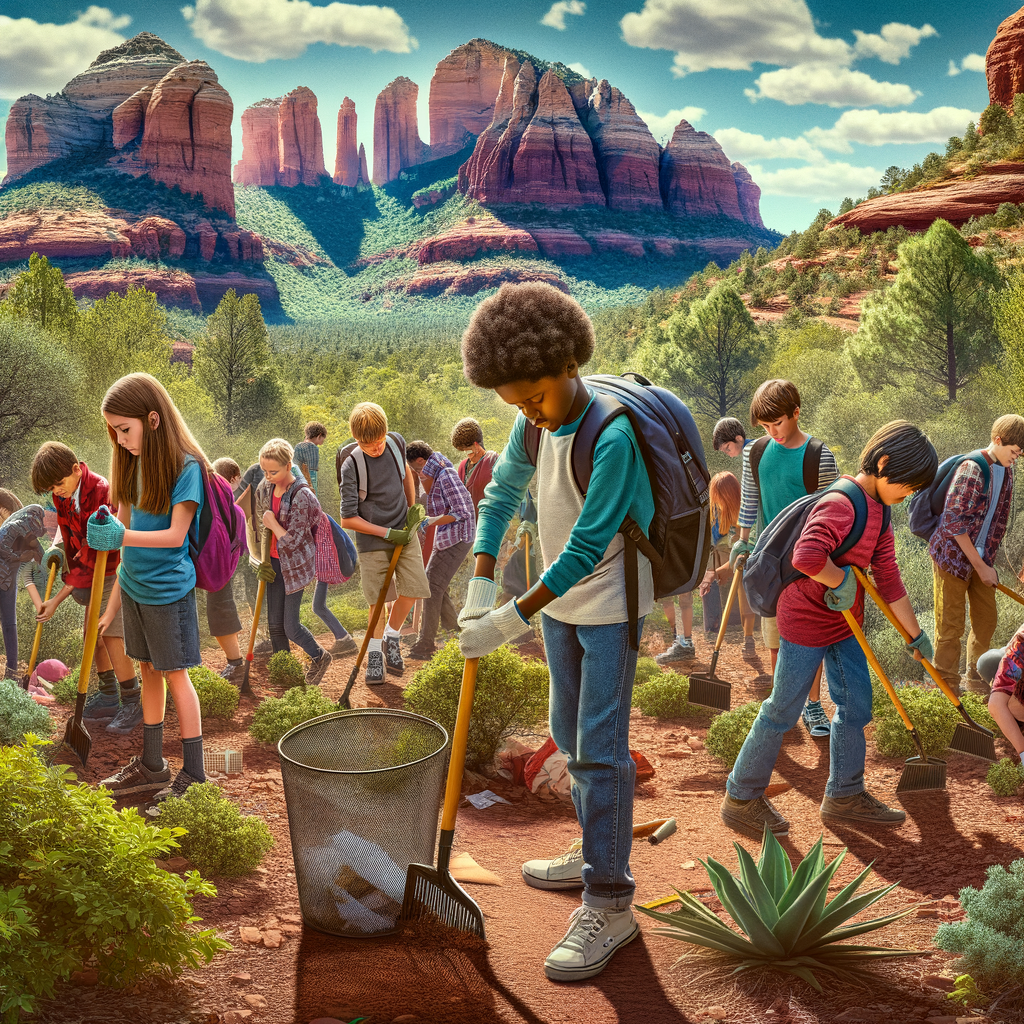Inspiring Outdoor Art Activities for Children in Nature
“`html
Outdoor Art: Let Kids Create Nature-Inspired Art with Materials Found Outdoors
The Joy of Outdoor Art for Children
Have you ever noticed how children come alive when they are outside? The sights, sounds, and textures of nature captivate their imagination, making it the perfect canvas for creativity. Outdoor art is not just about creating something pretty; it’s about exploring, discovering, and learning in a hands-on way. With the right materials, the forest, park, or even your backyard can become an art studio where children can express themselves freely.
Creating art outdoors invites a unique sensory experience. The rustle of leaves, the chirping of birds, and the feeling of grass beneath their feet can provide inspiration that’s different from the confines of a classroom. When kids engage in outdoor art, they also develop a deeper connection with their environment. It’s an excellent way to foster a sense of stewardship for the planet while promoting creativity. So why not blend art and nature and let their imaginations run wild?
Materials: What You Can Use from Nature
One of the beauties of outdoor art is that the materials can often be found right outside your door. Leaves, twigs, pinecones, rocks, and flowers can transform into art supplies. For example, vibrant leaves can be used to create stunning imprints on paper or even pressed between the pages of a heavy book for a natural bookmark. But it doesn’t stop there; how about using clay collected from riverbanks to make sculptures? The possibilities are endless!
Let’s not forget about the importance of texture and color when creating art. Natural materials provide a range of textures—from the smoothness of a pebble to the roughness of tree bark. Encourage kids to collect different materials and explore how they can combine them in their creations. This not only sparks their creativity, but also teaches them about the variety of nature and its beauty.
Finding Inspiration in Nature
Nature is one of the best sources of inspiration for children, filled with shapes, colors, and patterns just waiting to be observed. Encourage kids to take a moment to investigate their surroundings. What colors do they see? What shapes do the branches make against the sky? Simple observations can lead to incredible artistic ideas. By turning their focus to the natural world, children can find inspiration in even the most mundane places.
Craft Ideas to Spark Creativity
When it comes to outdoor art activities, the sky’s the limit! One fun idea is creating nature collages. Kids can use their collected materials to create a beautiful display of art on a sturdy piece of cardboard or wood. This allows them to experiment with layouts and designs while letting their creativity out into the open. Plus, it’s a perfect lesson in recycling and repurposing materials.
Another exciting project is making animals or creatures from sticks and leaves. This can involve creating a basic structure using twigs and then adding details like leaves for wings or flowers for eyes. Enabling children to build and sculpt using natural items is both fun and educational. It provides a hands-on way for them to work on fine motor skills, all while encouraging imaginative play.
Getting Messy: Embracing Imperfection
Let’s face it; outdoor art can get messy, and that’s part of the fun! Kids can use mud to paint, water to create splashes, or gather leaves to stamp their foot paths with color. Embracing messiness allows children to experience the joy of creating without the pressure of perfection. They can paint with their hands, create edible art with fruits, or leave footprints in sand.
Encouraging kids to be okay with “mess” can also lead to discoveries about process vs. product. Often, the journey of creation is more important than the artwork itself. This lesson can carry over into many aspects of their lives as they learn to appreciate effort and experimentation, rather than focusing solely on the end result.
Safety First: Guidelines for Outdoor Art
While outdoor art is enriched with fun and creativity, it’s important to keep safety in mind. Always supervise younger children, especially if they are working with tools or materials that could be harmful. Ensure they understand which materials are safe to use and which are not, preventing any unwanted accidents. Teaching kids about safety concerning their environment is also crucial; avoid picking unknown plants or touching potentially hazardous items.
Moreover, consider the environment when gathering materials. Teach children to take only what they need and to appreciate nature without disrupting ecosystems. They can collect fallen leaves or twigs but should never pull items from living plants or flowers. Emphasizing respect for nature goes hand-in-hand with their artistic journey, reinforcing the values of sustainability.
Showcasing and Celebrating Their Art
What happens after the art is created? Celebrating their work is vital for nurturing budding artists. You might create a gallery on your porch or wall space dedicated solely to displaying their outdoor art creations. This not only boosts children’s confidence but also makes them feel valued and appreciated. You could even host a small ‘art show’ inviting family or friends who can marvel at their creations.
Sharing their work through photos or social media can also be a fun way to encourage their artistic endeavors. It provides them with a platform to showcase their creativity while receiving positive feedback. This validation can motivate them to continue creating, pushing boundaries, and expressing themselves through art.
Conclusion
Outdoor art offers a fantastic opportunity for kids to engage with nature creatively. By utilizing materials found in their environment, they can not only create beautiful pieces of art but also cultivate a deeper appreciation for the world around them. Encouraging creativity helps children develop important skills like observation, problem-solving, and fine motor coordination, all while having loads of fun! Whether it’s muddy footprints or colorful leaf collages, the world is truly their canvas. So, get them outside, let them gather materials, and watch their imaginations flourish!
FAQs About Outdoor Art for Kids
1. What materials are best for outdoor art projects?
The best materials are those that can be easily found in nature, like leaves, twigs, rocks, and flowers. These not only add unique textures and colors but also encourage kids to explore their surroundings.
2. How can I ensure my child’s safety while doing outdoor art?
Always supervise your child during outdoor activities. Teach them which materials are safe to use and ensure they avoid touching unknown plants or potentially harmful items.
3. How do I inspire my child to create outdoor art?
Encourage exploration and curiosity about their surroundings. Organizing scavenger hunts or providing prompt questions can stimulate their creativity and motivation to create art in nature.
4. Can outdoor art be a learning experience?
Absolutely! Outdoor art projects can teach children about nature, textures, colors, and fostering a love for the environment. It also promotes skills like observation, problem-solving, and creativity.
5. How can I showcase my child’s outdoor art creations?
You can create a dedicated display area in your home, host an art show for family and friends, or share their work through photographs or social media. Celebrating their creativity is essential!
If you are interested in looking into an organized tour for you and your kids, consider visiting our preferred vendor: Sedona Red Rock Adventures.
“`
news via inbox
To be update with all the latest news.




